Film: “Little Girl” and “In Balanchine’s Classroom”
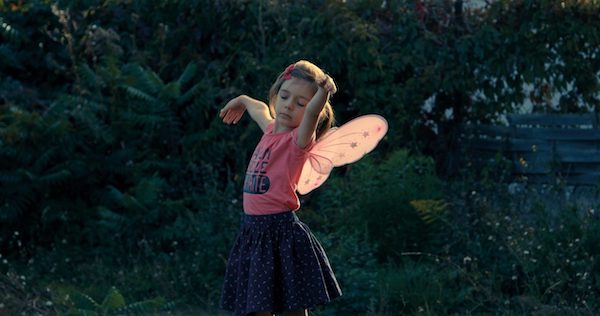
The subject of Sebastien Lifshitz’s sweet, sad documentary Little Girl, 8-year-old Sasha lives in rural France with her parents and siblings. We first see her carefully trying on various items of clothing and accessories, a popular pastime for most kids, but especially important to her.
Early in the film, we witness a conversation in which Sasha’s mother, Karine, tells a local doctor that at the age of two, her son insisted, “When I grow up I’ll be a girl,” and has never wavered from that certainty. The doctor asks Karine if she wished for a girl during her pregnancy, as if this might explain Sasha’s gender identification (!). Distraught, Karine admits that she did hope for a girl and that she has felt guilty ever since.
Thus begins Lifshitz’s poignant, pointed film. Shot in verité style without narration or identifying captions, Little Girl documents through conversations, interviews and fly-on-the-wall footage the struggles of a tirelessly devoted mother who wants nothing more than happiness and a semblance of normal childhood for her sensitive, intelligent child. Unfortunately, it’s a steep uphill battle for Karine, Sasha, and the rest of the family.
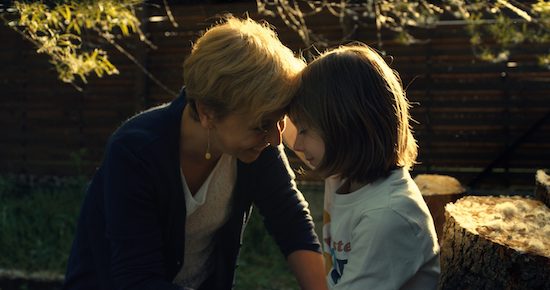
Karine takes Sasha to a sympathetic psychologist in Paris, who assures her that the desire for a girl during pregnancy has nothing to do with Sasha’s gender identification, and that there are many children like her. Sasha, who stoically admits that “Second grade teachers aren’t very nice,” is not only rejected by both boys and girls at school, but by teachers who can’t accept her for who she is. During the appointment, she cries silent tears, but can’t explain why. It’s clear that school is a very painful subject.
Also quite poignant are scenes of Sasha in dance class where the other girls get to wear pretty costumes while she’s given a boy’s tunic. Here, as elsewhere, the visuals are underscored by delicately lyrical music that seems to comment on Sasha’s vulnerability.
Scenes of happy home life show that at least Sasha has a supportive family going for her. We’re reminded that trans kids who are rejected by their parents get very little comfort indeed. Sasha’s father seems just as caring as his wife, and her older sister is a self-appointed protector. At one point, Karine’s level-headed young son advises, “Don’t take it from idiots,” referring to the administrators and teachers at Sasha’s school who are seemingly indifferent to her needs.
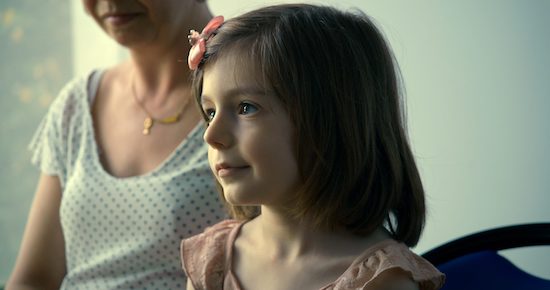
Finally, as third grade begins, things start to look up as Sasha is finally allowed to be who she is (though the dance studio is another story). Despite upbeat scenes of Sasha going to school in a skirt, her hair in a ponytail, the struggle for acceptance clearly doesn’t end here. Having fought hard for this victory, the exhausted Karine now worries about what may be in store for her daughter during adolescence. The future is clearly complicated.
A delicate, straightforward film that presents the trans experience from a new perspective, Little Girl is both lovely and heartbreaking.

Photo: Ernst Hass
For fans of George Balanchine and New York City Ballet, the company he founded and helmed until his death in 1983, In Balanchine’s Classroom is a welcome treat. In addition to archival footage of classes, rehearsals and performances, director Connie Hochman includes interviews with several of his most renowned dancers, including Merrill Ashley, the late Jacques D’Amboise, Heather Watts, Edward Villella and Gloria Govrin. Their deeply personal recollections of Balanchine’s unique philosophy and demanding technique—as well as their own insecurities, physical struggles and eventual success—provide fascinating insight into the man’s genius and the uniqueness of City Ballet. Anyone who’s ever seen a performance by Merrill Ashley, one of the most precise, fleet-footed of dancers, may be surprised to learn that she struggled mightily when she first joined the company, as did Villella and Watts. Eventually, they all became paradigms of Balanchine’s exciting, idiosyncratic style.
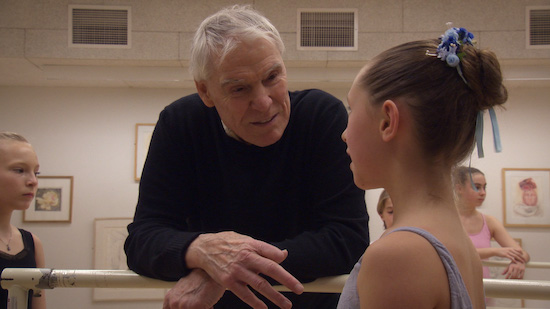
Courtesy of Zeitgeist Films
Through interviews and footage, we learn how Balanchine left Russia during the Revolution, later immigrating to the U.S., where he founded the School of American Ballet to teach his fresh, insanely fast choreography, pioneering a cool, new style considered by many to be quintessentially American. We also see how he pushed his dancers to move “bigger and faster” until they literally dropped to the floor. As Ashley notes, “Sometimes it seemed like he was being perverse.” Was it ethical to use these young bodies as experiments to test physical limits? Probably not. Did it result in some of the most astonishing choreography even seen in ballet? Absolutely.
There’s great footage of Balanchine teaching class in the 1970s, trying to convey the vision in his head by exhorting his confused dancers to “run starting forever.” Though exacting in many ways, he often kept dancers’ mistakes in the choreography because he liked the way they looked, or changed his steps to suit certain dancers’ bodies or strengths. He saw possibilities in unlikely dancers like the solid, towering Govrin, who says that she would not have stood a chance in another ballet company.
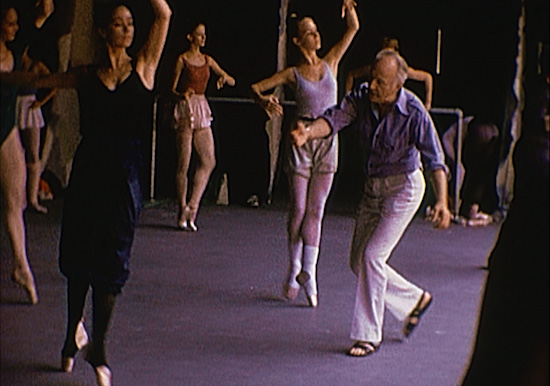
Apparently, even today’s dancers—ostensibly faster and stronger than those of yesteryear—still find Balanchine’s style tricky and exhausting. The film features scenes of American Ballet Theatre principal Stella Abrera grappling with the intricacies of the fiendish Symphony in C as she’s coached by Ashley. Balanchine’s spirit and vision is clearly alive in the bodies and minds of his former dancers, several of whom regularly stage his ballets and are shown teaching various classes and companies.
An homage to a great artist, the film doesn’t get too deeply into the stickier aspects of Balanchine’s legacy, such as his habit of marrying his favorite dancers and discouraging others from getting married in general. (His all-time muse Suzanne Farrell, who left the company after marrying another dancer, only to return years later, isn’t interviewed for this film).
Though there is mention of pain, injury and sacrifice, among those featured in this film, dancing for Balanchine was a tremendous gift. We’re left wondering who will pass the torch of his genius when they are no longer around.
Little Girl and In Balanchine’s Classroom open at Film Forum on Friday, September 17.
—Marina Zogbi

